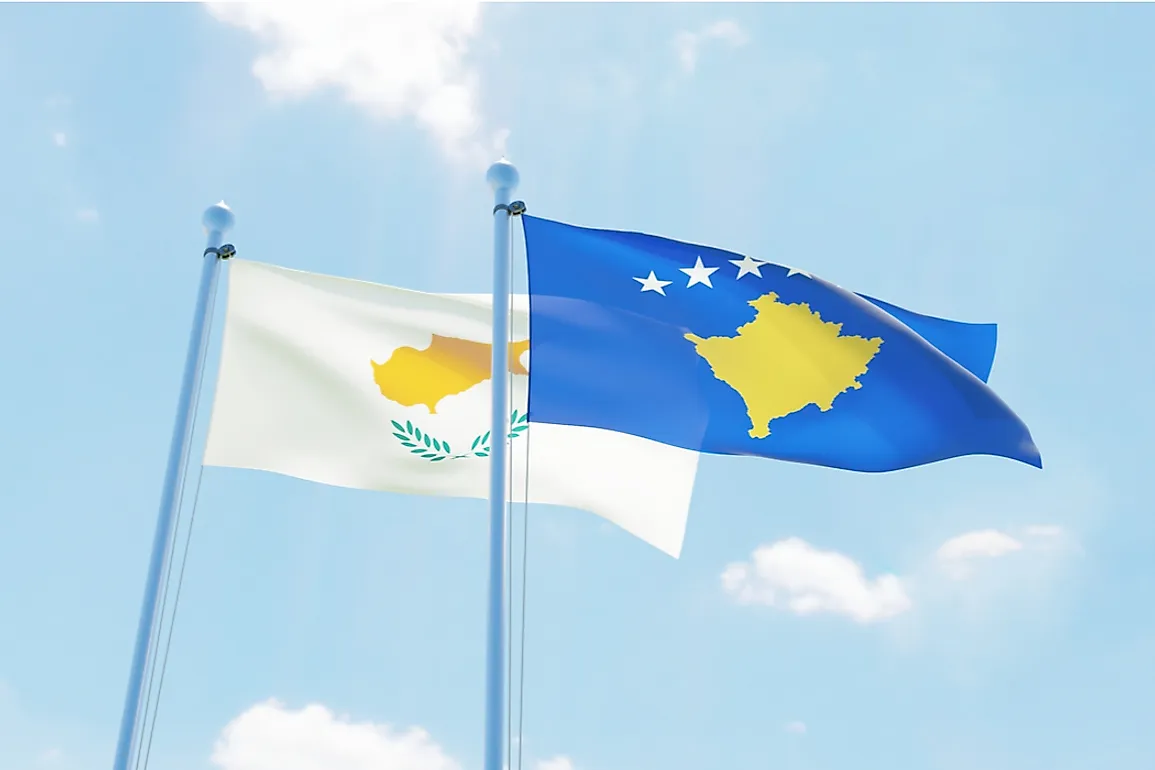Countries That Feature Maps on Their Flags

Other than being a source of identity and a national symbol for countries, flags are sacred banners with great significance. Every nation in the world has its flag which is designed with unique symbols and colors representing a nation’s struggle and growth over the years. These colors and symbols have special meanings. The majority of the countries in the world use different symbols and colors on their flags, but only two countries in the world have their maps on their flags. These countries are Kosovo and Cyprus.
1) Flag of Cyprus
Cyprus adopted their flag on August 16, 1960, after the signing of the London and Zurich Agreements which declared Cyprus independent. The current flag was an outcome of a design competition which was held in 1960. The winning flag was designed by an art teacher known as Ismet Guney. President Makarios III and Vice-president Fazil Kucuk selected the winning design.
The country's constitution stipulated that the flag should not be red (turkey flag) or blue (flag of Greece) and it should not have a crescent or a cross. Therefore, the designer selected neutral and peaceful symbols to indicate an agreement between the Turkish community and their rivals the Greek which had not been realized. Before they gained their independence, Cyprus used the flags of Turkey and Greece.
The country’s flag features a map of the island and two olive branches on a white flag. The olive branches symbolized peace between the Greeks and the Turks. The white color is also another peace symbol. The island’s map on the flag is copper-orange which represents the vast copper ore deposits on the island. The flags used in Cyprus years after independence differed both in colors and size of the map; in October 2005, the government proposed a new national flag but it was publicly-rejected.
2) Flag of Kosovo
The assembly of Kosovo adopted their flag on February 17, 2008, after gaining their independence from Serbia. The design was the outcome of an international competition which the United Nations and the Kosovo unity team organized. The United Nation stipulated that the new flag should have symbols which reflect the multi-ethnicity nature of the nation. They also instructed the competitors to avoid the use of the Serbian and Albanian symbols or the colors associated with the flag of Albania.
The competition attracted almost a thousand entries, and Ibrahimi Muhamer designed the winning flag. The flag of Kosovo is blue with the country’s map and six stars. The map on the flag is gold in color. Officially the stars represent the major ethnicity groups in the nation including Bosniaks, Romani, Gorani, Turks, Serbs, and Albanians. The shape and color of the flag of Kosovo resemble that of Bosnia and Herzegovina.
Before their independence, Kosovo was under the United Nations (UN), and they used the UN flag. Before 1969, the only flags which were legally used in the country were the flags of SR Serbia and SFR Yugoslavia. The Albanian population in Kosovo was allowed to use their flag but with a red star after 1969.











